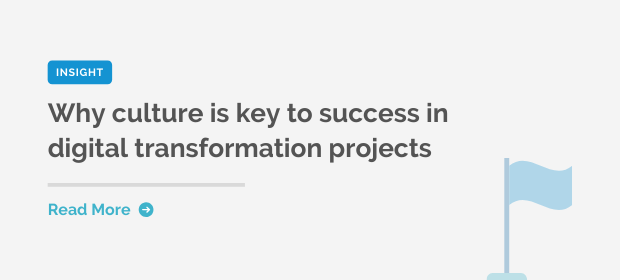The construction industry faces opportunity and challenge in equal measure. An 85% increase in construction projects by 2030 offers construction businesses an incredible chance to grow. Yet, a shortage of skilled workers and low rates of productivity makes it difficult for firms to rise to the challenge.
The solution is technology. McKinsey & Company predict that introducing modern technology to construction could improve productivity by 14-15% and generate savings of 4-5%. All of which will add to the bottom line.
Despite these advantages, the construction sector has been slow to adopt digital technology. And, perhaps partly as a result, its productivity stands at 1% over the past two decades in comparison to 2.8% for the global economy.
Beyond improving productivity and profit, there are many other compelling reasons for construction firms to adopt technology. These include improved collaboration between teams and stakeholders, an ability to scale smoothly and improved customer experience.
In the next part of this article, we look at the common problems digital technology solves.
Why Construction Companies Fail to Embrace Technology
Adopting new technology doesn’t happen overnight. However, digital solutions have been around for a long time placing other sectors ahead of construction when it comes to integrating technology.
The vast majority of construction workers have smartphones in their pockets. They’re already used to taking digital photos, sharing them with friends, completing forms and a wide range of other activity online. Indicating an acceptance of technology among the workforce.
Yet the construction industry could be doing more with in-work systems, progressing beyond traditional paper-based and/or spreadsheet heavy processes. And there are a number of reasons for this.
Lack of clear definition
Unless everyone knows what new technology offers, it can be difficult to gain buy-in. There are two types of digital transformation. McKinsey & Company draw a clear distinction between:
1. Business model innovation - think Uber transforming the taxi business from analogue to online.
2. Operational integration - where companies apply technology to enhance the development and delivery of projects.
If the definition of digital techology is misunderstood, it’s no surprise that the scale of change is also misinterpreted. Some construction firms have been stopped in their tracks by a perception that:
- new technology is too complex
- your business will pay for features you don’t need
- solutions are overkill when existing methods have worked for decades
These are limiting views that prevent construction businesses from moving forward, improving operations and enabling growth. Defining what’s in and out of scope on a project is a great way to overcome the cultural change barriers that exist within construction.
A failure to think beyond the technology
For new technology to be successful, businesses must recognise the importance of people in its adoption and use. This is particularly important in construction due to an absence of more advanced digital capability and a lack of willingness, so far, to change. According to McKinsey & Company, building additional capability in construction firms has the potential to increase productivity by 5-6%.
Lack of IT experience
In-house IT is often brilliant at supporting the day-to-day, however, for high impact projects, it can be necessary to complement your team with an outsourced support partner to provide strategic advice alongside experience gained working with the construction industry.
Difficulty securing budget
Without a clear line of sight between technology projects and enhanced productivity and profit, it can be difficult to make the business case and secure budget.
This article will give you all the insights, facts and figures you need to get really clear about what your technological transformation should accomplish and overcome every blocker to instilling new tech.
The Technology Solutions to Your Construction Industry Challenges
The construction industry is one of the most pressured in the world but it’s also one of the least digitised.
Adopting new technology could not come at a better time for your construction business as projects continue to become more complex and expensive placing your managers under greater pressure to improve efficiency, reduce timelines and do more for less.
Construction firms that have adopted new technology are already seeing the results.
Not only does new technology allow them to work more effectively and efficiently, but it lays the foundations for advanced solutions like artificial intelligence. This kind of technology helps construction firms prevent cost overruns, mitigate risk, plan projects more effectively and improves productivity and safety.
At a time when skilled workers are in short supply, shifting work to AI is a smart idea.
If jumping into artificial intelligence feels a little daunting, don’t worry. The starting point for any technology project is to digitise existing operations and solve common construction problems like these.
Streamline Inefficient Processes and Capture the Right Data
Construction projects are typically fragmented along the value chain with multiple layers of contractors, subcontractors and in-house specialists located in different teams and departments. Co-ordinating paper-based processes and spreadsheets across these parties is inefficient and risky, especially with the value of construction projects being high.
Missing paperwork, the chance that someone is working from an old, incorrect document, the need to update back office systems with data captured on paper ... it all adds up to slower communication and a greater chance that something will go wrong.
Paper-based processes and spreadsheets also increase the opportunity for data to be missed or incorrectly captured: only when forms get back to the office are errors noted. Which could mean sending someone back out to site to capture the right information.
Improve Productivity
With KPMG revealing that just 25% of construction projects are completed within 10% of their deadlines, there’s significant room for productivity gains and more profit.
Digital technology is already bedded in at early adopting construction firms. They’ve found that projects are much easier to fund and deliver because processes can be carried out online making them faster, cheaper and more efficient.
With highly fragmented supply chains, online systems will enable your business to grant access to everyone who needs it, empowering people to step away from paperwork that has been brought online as digitised processes. Unlike paper, these systems set parameters for data capture which will improve workflows, enhance accuracy and save time.
Following a thorough process analysis, it will also be possible for certain processes to be automated. These are often repetitive tasks like daily progress checks, subcontractor timesheet submissions and snagging lists. With the risk of human error removed, you can be sure that essential tasks are happening even if people are off sick or busy doing something else.
Enhance Collaboration and Make Work Mobile
In a JBK survey, 38% of construction workers admit to using pen and paper to collect field data while 25% use spreadsheets. Working on site might seem like it lends itself to offline methods however mobile technology has consigned this approach to the dark ages in other industries.
Digital technology enables workers to access critical build data, update plans in situ and share the changes in real time enabling collaboration with fully informed colleagues in other locations. This makes it easy to work collaboratively within and across organisations.
Office staff will also be able to keep on top of site activity, providing information as requested and monitoring project progress. It also means administrative staff don’t need to enter data from pieces of paper into systems with no audit - the person on site adds information directly into the software or digitised forms which then update background platforms.
These productivity savings add up significantly, not only in time saved but also in terms of enabling decisions to be made more quickly.
Real-Time Reporting and Visibility
Every time anyone updates a digital system, the information feeds into your reports giving you real-time data and complete oversight of every project on every construction lot.
You’ll be able to:
- take a high level overview of entire projects
- drill down into the details of specific builds
- see which teams are ahead of or lagging behind schedule
- assess financials in real time due to automated processes
- enjoy a sense of greater control over the business
And you’ll do all this with complete confidence knowing that the data is accurate because it’s up to date. This level of insight is available to leaders at all organisational levels, empowering them to be proactive in addressing issues, understanding blockers and taking action to enable progress.
It’s also possible for scope of work changes to automatically drive updates in the system, like generating material cost amendments or updating overtime requirements. This kind of data provides managers with the information they need to make better decisions faster.
Advanced Auditing and Controls
Unlike paper which can be lost, damaged or incomplete, digital technology has the power to create a trail of activity:
- Data must be entered to the right standards and level of detail
- Workers can capture digital signatures to approve deviations to or approval of completed work
- Photos and videos can be taken as evidence of completed works
- Documentation can be saved to the relevant system or folder for future reference or audit
Using systems to include rich data takes auditing to new levels and provides construction businesses with added auditing confidence.
Integrating New Technologies
Digital systems form the solid foundation needed to enable your firm to use more advanced tech like artificial intelligence, augmented reality and virtual reality.
These new digital technologies have already transformed the way engineering companies like Ford design and engineer their cars. And early adopters in the construction industry are reaping the benefits of these advances. It’s now possible for people to create and explore 3D models or work collaboratively with experts in disparate locations to solve complex construction problems by walking through the problem on a virtual site.
It’s simply not possible to make a giant leap from pen, paper and spreadsheets to integrating advanced IT solutions like these. You’ll need the software, hardware and a new cultural mindset for these technologies to land successfully. And digitisation of your processes and operations is the first step on this journey.
In Conclusion
In this article we’ve laid the groundwork that explains the kinds of problems digital technology can solve for your business. By dealing with these everyday challenges, you’ll prove the worth of new technology and overcome any objections, helping your investment to become a normal part of the way your business operates.
For your digital transformation to be successful, you’ll need to start with a clear definition of how digital will create value in your business. Take a look at the cost savings and productivity improvements you could make by introducing new tech.
Want to learn more about how technology could help your construction business? Get in touch on 0113 398 4199 or at [email protected].




